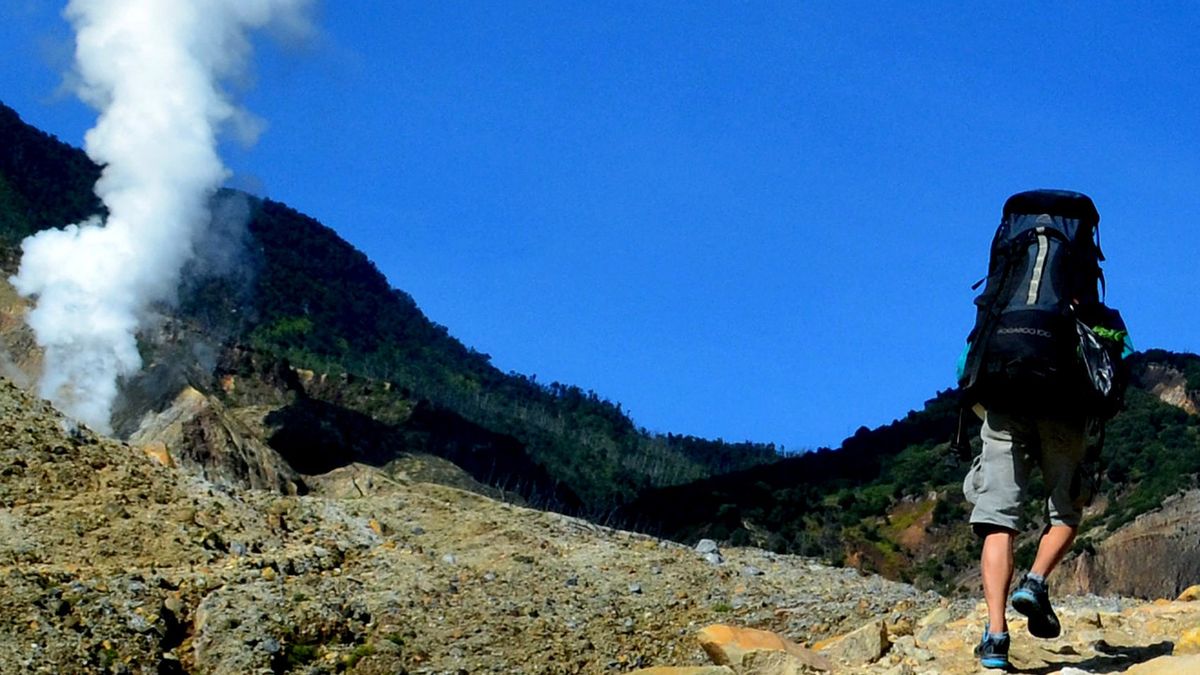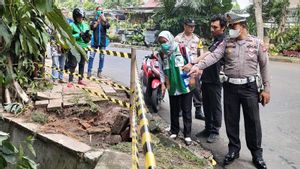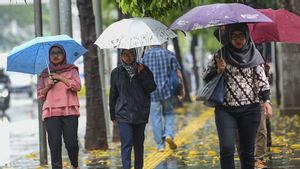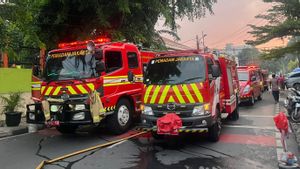JAKARTA - The Center for Volcanology and Geological Hazard Mitigation (PVMBG) appealed to residents to obey the map of volcanic disaster-prone areas (KRB). Moreover, it has entered the rainy season which has the potential to flood with lava rain.
"We urge residents to obey the KRB map. During the rainy season there is potential for lahars which are usually depicted in yellow on the map", said PVMBG Volcano Coordinator, Oktory Prambada, in a statement quoted in Jakarta, Wednesday, October 12.
Through this map, PVMBG has listed the dangers of active volcanic lava in Indonesia so that it becomes a guide for the community and regional development to reduce the impact of lahar damage which generally occurs when rainfall is high around the volcano.
He asked the public to increase awareness of the dangers of lahars in river valleys that have been depicted on the volcanic KRB map because lahars can occur when the eruption has stopped or there has been no previous eruption.
According to him, complying with the KRB map and limiting activities in river valleys whose water originates at the top of a volcano that is in an erupting phase is a wise step in mitigating the danger of lahars.
"Mitigation is not only the responsibility of the ministries and related institutions, but it is also more important to mitigate against these hazards which have been stated in the KRB map and other information related to volcanic activity from the PVMBG", said Oktory as quoted by Antara.
PVMBG noted that four volcanoes in Indonesia currently have level III or alert status, namely Mount Ili Lewotolok in East Nusa Tenggara, Mount Anak Krakatau in Lampung, Mount Merapi in Yogyakarta and Central Java, and Mount Semeru in East Java.
He revealed that of the four volcanoes with the alert status, only Mount Merapi and Semeru have a high potential for rain and lava floods because the four main factors of lava formation are in the two volcanoes.
"Mounts Merapi and Semeru currently have high rainfall around their volcanoes and the accumulation of material is also intense", he said.
The Meteorology, Climatology, and Geophysics Agency (BMKG) predicts the peak of the rainy season in some parts of Indonesia to occur from December 2022 to January 2023.
VOIR éGALEMENT:
Of the total 699 seasonal zones (ZOM) in Indonesia, BMKG said 175 ZOM (25.03 percent) will enter the rainy season in October 2022 covering parts of Sumatra, Java, Kalimantan, Bali, Nusa Tenggara, Sulawesi, Maluku, and Papua.
A total of 128 ZOM (18.31 percent) will enter the rainy season in November 2022 covering Sumatra, Java, Bali, Nusa Tenggara, Sulawesi, Maluku, and Papua.
The English, Chinese, Japanese, Arabic, and French versions are automatically generated by the AI. So there may still be inaccuracies in translating, please always see Indonesian as our main language. (system supported by DigitalSiber.id)

















